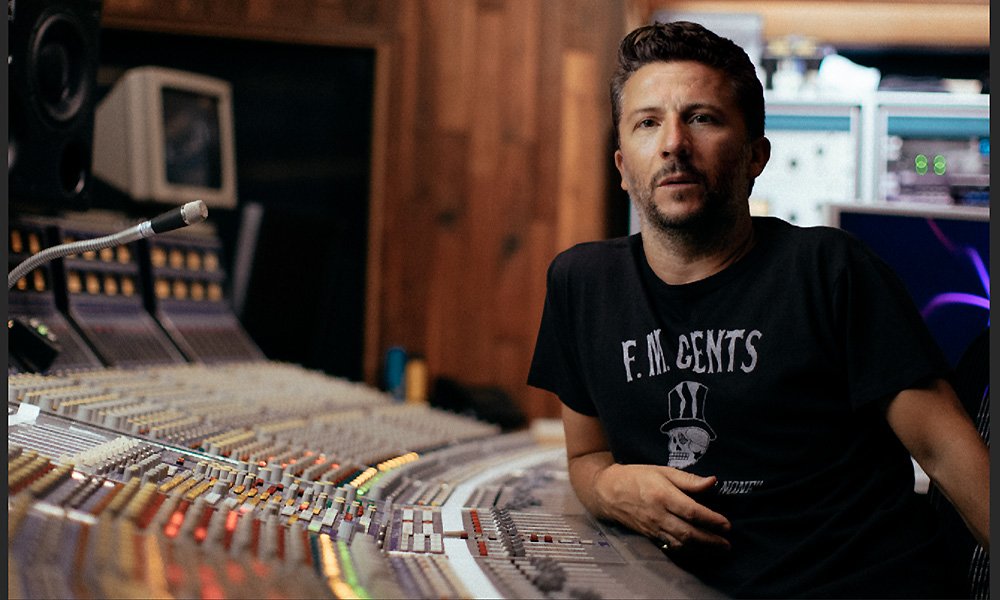Mark Rankin (Adele, Queens Of The Stone Age)
Two-time Grammy-winning producer and mix engineer Mark Rankin has worked with numerous A-list artists such as Adele, Queens Of The Stone Age, Iggy Pop, Weezer, Florence And The Machine and Foster The People. Rankin won two Grammy Awards in 2012 for his work on Adele's album, 21, and her single, ‘Rolling in the Deep’. He also received two Grammy nominations for the Queens of the Stone Age album ...Like Clockwork.
Tell us about your current studio setup.
I use Pro Tools to mix and I’m nearly always in the box now as it sounds great. I do have a DAV passive summing mixer that I run into a pair of EAR 824 pre’s to gain up if I want to go that way. But these days I find that the UA plugins sound so good that I don’t need to.
I monitor on ATC SCM50’s with subs which I have set up in an Attack Wall, and I also use NS10s, Auratones, a Pure radio with an aux input, and a Sonos 5. When it sounds great across all of those, I’m there
In terms of plugins, as a mixer, I have the usual suspects from UAD, Waves, Soundtoys, Plugin Alliance, Kush and so on. I do have some favorites like Joey Sturgis’s Gain Reduction, Acme Opticon XLA3, Waves CLA, Fabfilter Pro Q, UAD’s Ampex 102, Pultec EQP1A, VSM3, and Culture Vulture. So many of those are awesome!
Having mixed and produced so many songs over the past few years, how do you stay fresh and excited about making music every day?
The fact that someone sends me their song to work on excites me! Just listening through for the first time is such a buzz to imagine what I’m going to do to elevate it to where I think it can go that usually, I can’t wait to get started. I’ve done the crappy jobs where I dreamed all day about being in a studio. Then when I actually got to work in studios, I had to pick up the dog crap that someone had walked into the carpet. So I know how lucky I am to get to do what I do now.
How do you typically approach the mixing of a song?
First off, I have templates that have the signal chains that I use regularly for particular instruments. Of course, they’re all different. But that gives me a basic starting point.
I make sure everything is colour-coded the way I like it so that when I’m looking for a particular instrument, I know that if it’s a keys part it’s yellow and I’ll find it much faster — which keeps the energy moving.
All the markers have their number before the name, so I can quickly move between sections of the song. All edits get cleaned up and unnecessary stereo tracks like a mono vocal that have been bounced to stereo are split and made mono again and anything that can be consolidated to be made simpler will be.
I’ll listen through to the reference mix on 3+4 and make sure that the multitrack that I’m hearing out of 1+2 sounds the same!
When getting into the mix, it’s usually about finding what drives the song and that’s where I’ll start. If it’s vocal-driven, then I’m working on the vocal sound and finding the right atmosphere for the song. Instruments are then brought in to complement and interplay with that without getting in the way.
If it’s rhythm focused, then I crank the speakers a bit and get drums, bass, and whatever else is integral to the hook hitting right, and as soon as I’m happy with that, I’ll get the lead vocal in and the rest of the instruments follow as before.
I’ll then work back through the rest of the song applying that same principle to the other sections of the arrangement knowing that they're all leading up to the hook.
Once it’s feeling good as an arrangement, it’s then fine-tuning everything until I have no questions left to ask!
I don’t make big editing decisions unless I’m asked to. Someone has usually spent a lot of time getting the song to where it is when I get it, so I’m just trying to make it clearer and to the point.

